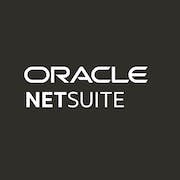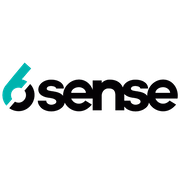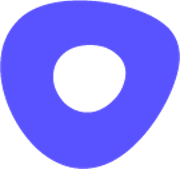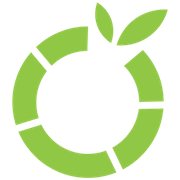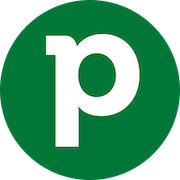Looking for the best sales forecasting software? Our comprehensive buyer's guide provides everything you need to make an informed decision. Learn more now.
As a business owner, you want to be able to implement strategic decision-making about your company's future. One key aspect of this is being able to accurately forecast your sales. This is where sales forecasting software comes in. With the right solution, you can get a clear picture of your company's revenue projections and make data-driven decisions to guide your business forward. However, with a wide range of software options available on the market, it can be difficult to decide which one is right for you. In this buyer's guide, we'll take a deep dive into all the key features and considerations you should keep in mind when shopping for this sales tool. So, let's get started and find the perfect solution for your business.
What is sales forecasting software?
This is a powerful tool that predicts future sales by analyzing historical sales data, market trends and customer behavior. It provides businesses with valuable insights that enable them to predict the demand for their products or services and optimize their resources accordingly. With the right sales forecasting software, organizations can leverage historical pipelines, product performance, and rep activity to predict future sales with up to 98% accuracy. The prediction of sales is especially important for companies that rely on sales projections for decision making. It allows companies to anticipate spikes in demand and plan for them, as well as adjust their sales and marketing plans accordingly.
Here are some of its common use cases:
- Predicting future sales for accurate financial planning.
- Identifying top performing products and services for investment and marketing.
- Analyzing and modifying sales strategies to align with market trends and customer behavior.
- Calculating sales team performance and setting achievable sales targets.
Sales forecasting technology can be invaluable for both startups and established businesses, helping them optimize their resources and maximize profits. Some of these businesses include:
- Retail and e-commerce businesses that need to track and analyze sales data across multiple channels.
- Service-based businesses that track recurring revenue, such as software and subscription-based businesses.
- Manufacturing businesses that need to optimize production and inventory planning based on demand trends.
- Financial service providers that need to accurately forecast future revenue and make informed investment decisions.
What are the benefits of sales forecasting technology?
This essential forecasting tool does not only help companies to plan for the future, but also provides data-driven insights into past and present sales trends. Here are some of its main benefits:
- Accurate sales projections: A sales forecasting tool uses advanced algorithms to analyze historical sales data, which enables businesses to make accurate projections about future sales. By forecasting sales accurately, companies are able to make informed decisions about inventory management, pricing, staffing, and investment in new products or services.
- Better financial planning: It helps businesses to plan their finances more effectively. By projecting future sales, companies can plan their budgets and expenditures accordingly, which ensures that they do not overspend or run into financial difficulties.
- Increased efficiency: With this system, businesses can streamline their sales processes. The software provides insights into sales team performance, allowing companies to identify areas for improvement, and optimize their sales strategies.
- Improved inventory management: A sales forecasting solution can help companies to manage their inventory more efficiently by predicting future demand for products or services. This ensures that companies are able to maintain optimal inventory levels, reducing the risk of stockouts or overstocking.
- Competitive advantage: This software gives companies a competitive advantage by providing them with insights into market trends and customer behavior. This enables companies to adapt quickly to changes in the market, and stay ahead of their competitors. Sales organizations that leverage a formal and structured forecasting review process increase their win rates of forecasted deals by 25% versus those that take a less formal approach.
10 key features of sales forecasting software
Data collected from Chorus shows that 57% of sales reps inaccurately forecast their pipeline. To reduce the probability of such inaccuracies, sales forecasting software has features that has made it become an indispensable part of the professional sales kit. In this section, we will highlight 10 common features found in many sales forecasting software solutions.
1. Data analysis and visualization tools:
This program can analyze and visualize past sales data, which helps businesses to gain predictive insights into their sales patterns and make informed forecasts.
2. Forecasting accuracy:
The accuracy of forecasts is critical, and sales forecasting technology can help improve this by considering numerous variables such as competition, seasonality, and historical sales performance.
3. Real-time updating:
The platform regularly updates in real-time, ensuring that sales forecasts are always up-to-date, providing businesses with the most accurate information.
4. Customization:
Every business is unique, and a sales forecasting application provides numerous customization options that allow users to tailor it to their company needs.
5. Integration with other business systems:
The software can be integrated with other business systems, including CRM and ERP systems.
6. User-friendly dashboards and reports:
It provides easy-to-use dashboards and reports to give users quick and comprehensive snapshots of the sales performance.
7. Scenario analysis:
This feature allows 'what-if scenarios' to be run to predict how changes, including seasonal trends, price variations, or promotions, can influence future sales performance.
8. Collaboration:
The system allows multiple users to collaborate in real-time, exchanging information and working together to analyze and make accurate forecasts.
9. Alerts and notifications:
It can send alerts and notifications if sales goals have been met or exceeded, ensuring that businesses stay on top of their performance.
10. Predictive sales analytics:
The sales forecasting package can use predictive analytics to determine trends, make smarter forecasts, and identify issues before they occur.
Things to consider when adopting a sales forecasting program
When it comes to purchasing sales forecasting technology, there are several factors that businesses should keep in mind to ensure that they are investing in the right product.
- Firstly, it is important to consider the accuracy of the software. Does it use a variety of forecasting methodologies to generate sales predictions? Can it analyze historical data to provide insights into past sales performance?
- Secondly, the interface's ease of use is crucial. Sales managers and team members should be able to access and input data quickly and easily.
- Thirdly, compatibility is equally important. Can the system integrate with your current CRM platform and other systems being used within the company?
- Fourth, it's essential to consider the its scalability. Will it be able to handle a growing customer base and increased data flow? Lastly, cost is also a factor to consider. Are there any additional fees, and is the software price competitive compared to other similar options?
By taking these factors into account, businesses can make an informed decision when selecting a sales solution that will help them achieve their revenue goals, improve decision-making, and drive predictable growth.
Market trends for sales forecasting software
In recent years, the market for sales forecasting software has expanded and evolved incredibly. This year and beyond, some of the biggest trends in the market include the advent of (artificial intelligence) AI-based sales forecasting, predictive modeling, and customized forecasting solutions.
Trend #1
Firstly, AI-based sales forecasting models are becoming increasingly popular, as they can analyze data more accurately and efficiently than traditional methods. Tools like Aviso and Cube use machine learning algorithms to gather massive amounts of data, identify patterns, and make predictions that help organizations make better sales decisions.
Trend #2
Secondly, the predictive modeling approach is also gaining traction. Advanced analysis techniques such as time-series modeling, regression analysis, and moving averages, allow businesses to perform more accurate forecasting. This approach helps account for changing market dynamics, new product launches, or factors such as seasonality and consumer behavior.
Trend #3
Thirdly, customized sales forecasting solutions are also becoming popular. Businesses are looking for software tools that can adapt to their specific needs, processes, and requirements. With customizable dashboards, forecasting accuracy can be improved with tailored models for specific industries, product lines, or customer segments.
While businesses have a wide range of sales forecasting software tools to choose from, the above mentioned are the most significant trends for 2024 and beyond. With these advances in technology, companies can benefit from accurate and reliable sales forecasting, empowering them to make informed business decisions, and stay ahead of the competition.
Conclusion
In conclusion, sales forecasting software is an indispensable asset for businesses striving to make data-driven decisions, streamline their sales operations, and maintain a competitive edge. The growing popularity of this platform across businesses of all sizes underscores its crucial role in guiding users towards informed decision-making and accurate sales performance predictions.Embracing this technology not only facilitates immediate improvements but also sets the stage for sustained long-term growth and success in an ever-evolving marketplace.

